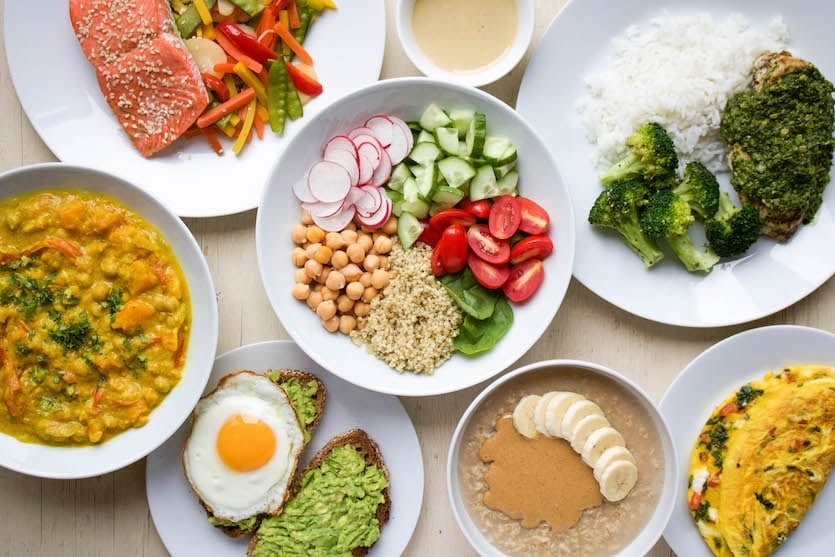Introduction:
Ensuring proper nutrition for growing children is one of the most important responsibilities for parents. In India, where dietary habits vary across regions and cultures, maintaining a balanced diet can be both a challenge and an opportunity. A child’s physical and mental development heavily depends on what they eat during their formative years. From boosting immunity to improving concentration in school, a nutritious diet plays a vital role in every aspect of a child’s life. This article shares the top 10 balanced diet tips that Indian parents can follow to help their children grow healthy, active, and strong — both physically and mentally.
Introduction: Why Nutrition Matters Now
Child nutrition is a critical issue in India, especially in rural areas. According to the National Family Health Survey-5 (NFHS-5), nearly 35.5% of Indian children under five are stunted, and 32.1% are underweight. Malnutrition not only affects immediate growth and health but also has long-term impacts on cognitive development, educational outcomes, and economic productivity.
A balanced diet is the foundation of healthy growth. It supplies all essential nutrients needed for physical development, brain function, immunity, and energy. Promoting balanced diets at home and school is an urgent need for India’s social and economic progress.
Why Is Child Health Important?
Children represent the future of our society. Their health determines their ability to learn, grow, and thrive in a complex world. Good health during childhood:
- Lays the foundation for a productive adult life
- Reduces healthcare costs in the long term
- Enhances learning abilities and school attendance
- Lowers risk of chronic diseases in adulthood
When children are well-nourished and healthy, they perform better in school, develop stronger social skills, and contribute meaningfully to their communities.
Global and National Statistics on Child Health
India:
- NFHS-5 (2021):
- 35.5% of children under 5 are stunted.
- 32.1% are underweight.
- 67% of children aged 6–59 months are anemic.
- Comprehensive National Nutrition Survey (CNNS): Found that 17% of adolescents aged 10–19 years are thin for their age (BMI-for-age below -2 SD).
Global:
- UNICEF (2023):
- 148 million children under 5 worldwide are stunted.
- 45 million are wasted (too thin for height)
- 45% of deaths among children under 5 are linked to undernutrition.
- World Health Organization (WHO):
- Only 1 in 6 children globally receives a minimally acceptable diet.
- Micronutrient deficiencies (e.g., iron, vitamin A) affect over 2 billion people worldwide, especially children.
These numbers highlight the urgent need for targeted nutrition interventions, especially in developing countries like India.
LSI Keywords: child malnutrition statistics, stunting in India, WHO child health data, undernutrition in children, global child growth crisis
Why Children Need a Healthy Diet: Research-Based Insights
Numerous studies and expert bodies confirm the strong link between child nutrition and overall development:
- UNICEF’s 2022 report on child nutrition shows that children who are undernourished in their early years are more likely to drop out of school and suffer from poor mental and physical health throughout life.
- According to The Lancet Series on Maternal and Child Nutrition (2021), balanced nutrition in the first 1000 days (from conception to age 2) is critical to brain development, immune strength, and metabolic health.
- The World Bank (2020) states that children who receive proper nutrition early in life score better on cognitive tests and have up to 25% higher earning potential as adults.
- A 2019 study by the Indian Council of Medical Research (ICMR) linked poor dietary diversity among rural Indian children to micronutrient deficiencies and increased susceptibility to infections.
Children who lack access to a balanced diet often face:
- Stunted growth (low height for age)
- Wasting (low weight for height)
- Poor academic performance
- Higher rates of illness and hospital visits
Promoting balanced nutrition is not just about food—it’s about shaping human potential.
LSI Keywords: importance of child nutrition, research on child diet, benefits of early nutrition, health and academic outcomes, food insecurity effects

What is a balanced diet?
A balanced diet includes all five major food groups:
- Carbohydrates—provide energy (e.g., rice, wheat, millets)
- Proteins—support muscle and brain development (e.g., dal, eggs, milk)
- Fats—necessary for brain health and energy (e.g., ghee, oil, nuts)
- Vitamins and Minerals—boost immunity and prevent deficiencies (e.g., fruits, vegetables, leafy greens)
- Water—Aids digestion and nutrient absorption.
LSI Keywords: healthy eating habits, nutritional requirements, food pyramid for kids, Indian food groups, essential nutrients
Nutrients and Their Food Sources: Benefits for Children
Nutrient Food Sources Health Benefits Carbohydrates Rice, wheat, bajra, jowar, ragi Provides energy for play, learning, and growth Proteins Dal, legumes, milk, eggs, sprouts, peanuts Builds muscles, brain development, immunity Fats Groundnut oil, mustard oil, ghee, nuts Brain development, hormone regulation Calcium Milk, curd, ragi, leafy greens Bone and teeth growth Iron Spinach, jaggery, lentils, egg yolk Prevents anemia, supports brain function Vitamin A Carrots, papaya, mango, and green leafy veg Eye health, skin, immunity Vitamin C mango, lemon, orange, guava Iron absorption, wound healing Fiber Whole grains, vegetables, fruits Digestion prevents constipation.
LSI Keywords: child nutrition chart, food sources of iron and calcium, benefits of vitamins for children, anemia in kids
Top 10 Balanced Diet Tips for Growing Children
1. Use Local and Seasonal Fruits and Vegetables
Affordable and rich in vitamins and antioxidants. Example: guava (vitamin C), spinach (iron).
2. Switch to Whole Grains
Use ragi, bajra, and jowar for fiber and B vitamins. Whole grains provide sustained energy.
3. Add Daily Protein Sources
Proteins from dal, eggs, sprouts, and milk help in brain and body development.
4. Include Healthy Fats in Moderation
Use traditional oils (mustard, groundnut), nuts, and ghee for brain and cell health.
5. Dairy and Fortified Alternatives
Milk, curd, and ragi help meet calcium needs for growing bones.
6. Iron-Rich Foods to Prevent Anemia
Include leafy greens, pulses, jaggery, and lemon to aid iron absorption.
7. Healthy Midday Snacks
Use roasted chana, boiled peanuts, sweet potato, or fruit instead of processed snacks.
8. Ensure Safe Drinking Water
Clean water is crucial to prevent diarrhea and infections, which impact nutrition.
9. Limit Junk and Packaged Foods
Avoid excess sugar, salt, and trans fats. Promote home-cooked meals.
10. Preserve Traditional Diets
Idli-sambar, khichdi-curd, and ragi mudde are nutritionally balanced and affordable.
LSI Keywords: balanced Indian meals, healthy Indian snacks, child-friendly recipes, nutrition tips for parents, school lunch ideas
Social and Parental Responsibilities
Parents face several challenges when adopting a balanced diet for their children:
- Lack of time due to work and responsibilities
- Limited awareness of nutritional needs
- Influence of packaged food marketing on children’s choices
- Affordability and access to diverse food items in rural settings
However, parents play a key role in shaping their child’s eating habits. Motivating messages for parents:
- “Every healthy bite builds your child’s future.”
- “A nourished child is a confident, curious learner.”
- “You are your child’s first nutrition teacher.”
Responsibilities include:
- Preparing diverse, home-cooked meals
- Reducing junk food in the home
- Educating children about healthy choices
- Encouraging family meals to build good habits
LSI Keywords: parental nutrition guidance, role of schools in child health, government schemes for nutrition, community health education, parenting tips for healthy kids
Economic Impact of Child Nutrition
- UNICEF reports that investing in child nutrition yields a 10x return in productivity and reduced healthcare costs.
- Poor nutrition leads to lower IQ, reduced school performance, and limited job prospects.
- A well-nourished child becomes a healthier, more productive adult—driving national development.
LSI Keywords: nutrition and economic development, child health and poverty cycle, nutrition investment returns, productivity and health
Research Reports Supporting Balanced Diet Promotion
- NFHS-5 (2021): 67% of children aged 6–59 months are anemic in India.
- Global Nutrition Report (2022): Malnutrition costs developing countries up to 11% of GDP.
- World Bank (2020): Early nutrition programs can increase adult wages by 25%.
- Lancet Series on Maternal and Child Nutrition (2021): Undernutrition in early life leads to long-term physical and cognitive impairments.
- UNICEF Child Nutrition Report (2022): Undernourished children are 19% less likely to achieve reading proficiency by age 10.
- ICMR-RMNCH+A Strategy Brief (2019): Diet diversity in rural areas needs urgent attention to reduce micronutrient deficiencies.
LSI Keywords: Indian nutrition statistics, NFHS data, child health reports, global malnutrition insights, child development studies
Long-Term Impact on the Next Generation
Poor childhood nutrition can lead to:
- Lifelong health issues (diabetes, heart disease)
- Intergenerational poverty
- Reduced learning and earning potential
On the other hand, a balanced diet:
- Builds a stronger, smarter future generation
- Reduces national healthcare burden
- Supports sustainable development goals (SDG 2: Zero Hunger, SDG 3: Good Health)
LSI Keywords: future generation health, sustainable child growth, nutrition and SDGs, early nutrition impact, intergenerational nutrition
Helpful Resources:
- Mid-Day Meal Scheme—Ministry of Education, Govt. of India
- POSHAN Abhiyaan—Ministry of Women and Child Development
Conclusion
Balanced diets for children are not a luxury—they’re a necessity. In India, where millions of children live in vulnerable conditions, promoting simple, affordable, and traditional nutrition practices can transform lives. By working together—parents, schools, communities, and governments—we can ensure that every child grows up healthy, strong, and ready to shape India’s future.
Healthy children today make a healthier nation tomorrow.


2 thoughts on “Top 10 Balanced Diet Tips for Growing Children”